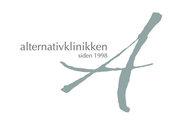Veratrum album. This remedy should be given early in the true cholera. It has profuse watery stools with a cold, blue surface and cold sweat on forehead and great prostration. Its characteristics may be summed as follows:
1. Pain in the abdomen preceding stool. 2. Profuseness of the stool and forcible evacuation. 3. Great prostration following stool. 4. The sense of inner burning. 5. The cold sweat. 6. Cold surface of the body.
There are sharp, cutting pains in the abdomen and great weakness, almost fainting with stool, at the same time there is vomiting and purging, cramps and rice water discharges. There must be pain for Veratrum to be well indicated. Stools are worse at night and the patient emaciates rapidly. It is our first remedy in cholera infantum with greenish stools, sometimes containing flakes like spinach. Jatropha. Cholera, vomiting of ropy, albuminous matters, great prostration, vomiting and purging and rice water stools. Cramps and coldness. It pictures cholera perfectly.
Camphora. With this remedy the system seems overwhelmed by the violence of the poisoning even before the vomiting and diarrhea appear; there is at once intense prostration, bluish, icy cold face, cold body, weak, squeaky voice, stiffness of muscles, coldness and collapse, burning in stomach and oesophagus.
Coldness, dryness and blueness express its characteristics. The discharges are scanty, if present at all, the tongue is actually cold. It is an almost infallible remedy at the onset of cholera, and was so considered by Hahnemann. It corresponds to a dry cholera, where the patient is taken simply with coldness, has not the vitality to vomit and purge. It suits especially, therefore, the period of invasion..
Cuprum. Intense spasms and cramps mark this remedy; there is coldness of the surface of the body, dryness of the mouth, thirst, blueness of the skin, cramps of the muscles of the calves, violent pains in the epigastrium and ineffectual efforts to vomit. It has vomiting and purging nearly as great as Veratrum, but not the cold sweat.
Cramps are more prominent under Cuprum than any other remedy. It has also spasmodic twitchings, and has been used as a prophylactic. Probably the acetate is the better preparation of the use. Hale recommends Cuprum arsenicosum. The evacuations of Cuprum are choleric; they irritate more than they inflame, thus coming nearer to cholera than Arsenicum. Everything is spasmodic, and it is indicated only when vomiting and purging have set in. In the chest the cramps produce dyspnoea; there are cramps in extremities, even in fingers and thumbs.
Arsenicum. Arsenicum poisoning has been mistaken for cholera. There is intense vomiting and purging, brownish yellow, profuse, offensive yellow or green stools with thirst, cold body, and burning internally. It has more restlessness and less sweat than Veratrum. In cholera infantum with undigested stools, restlessness, and rapid emaciation. Diarrhea when the child begins to eat and drink. Ptomaine poisoning calls for the remedy. It is distinguished from Veratrum by the scantiness of the discharges. Lachesis. Vomiting renewed by the least exertion.
Carbo vegetabilis. The remedy where reaction seems extinct; the prostration is so great that the patient is too weak to move, has cold body, rapid and thread-like pulse and cold breath. When vomiting, diarrhea and spasm or pain have ceased. Prostration from drain on the system, lips bluish, breathing weak, is an excellent indication group for Carbo vegetabilis.
Secale. Suits the stage of collapse with desire to keep cool; cholera infantum with profuse undigested stools, watery and offensive, followed by prostration; the movements are copious and come in spurts; the skin is wrinkled , dry and cold; patient is almost pulseless, cold, but averse to being covered, spasmodic twitching of muscles, spreads finger apart, eyes sunken, features pinched, are important indicating symptoms of Secale.
Podophyllum. This remedy pictures cholera morbus; there is a painless watery stool coming out with a gush and a loathing of food; undigested diarrhea worse mornings may also be present.
Calcarea carbonica. Cholera infantum, craving for eggs; vomiting of milk in curds, diarrhea, worse in the evening, of greenish, undigested, watery and sour stools are characteristic of this remedy.
Aconite. This remedy has greenish or chopped spinach stools and inflammatory symptoms Hempel recommended Aconite tincture in cholera where there is a rapid collapse unattended with copious evacuations. A quiet,subdued, passive condition contraindicates Aconite. Aconite is one of the most important remedies in the active stage of cholera infantum.
